Which motors are widely used in industrial production?
In the industrial field, small and medium-sized three-phase asynchronous motors are the most widely used motor products at present. Different motors have different applications. With the continuous development of motor manufacturing technology and the continuous deepening of the research on the working principle of motors, there are also Many new types of motors, including rare earth permanent magnet motors, switched reluctance motors, synchronous reluctance motors, etc.
Small and medium-sized three-phase asynchronous motors are currently the most widely used motor products in industry. A three-phase asynchronous motor is a type of AC motor, also known as an induction motor. It has a series of advantages such as simple structure, easy manufacture, sturdiness and durability, convenient maintenance, low cost and low price. Therefore, it is widely used in industry, agriculture, national defense, aerospace, scientific research, construction, transportation and people's daily life. . But its power factor is low, and it is limited in application.
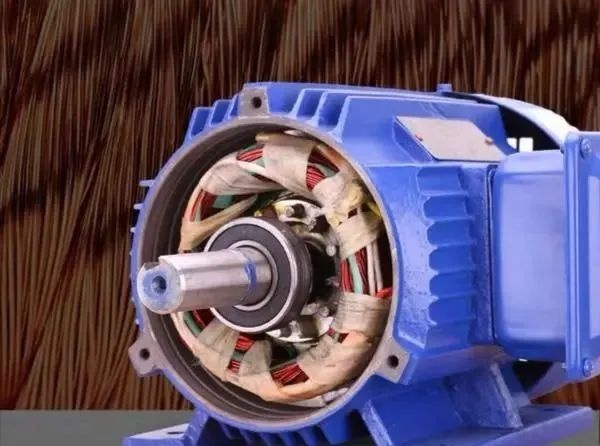
Prepare a three-phase asynchronous motor to be disassembled, and look at its structure from the outside to the inside. Figure 6-1 is the outline drawing and sectional view of the three-phase asynchronous motor.
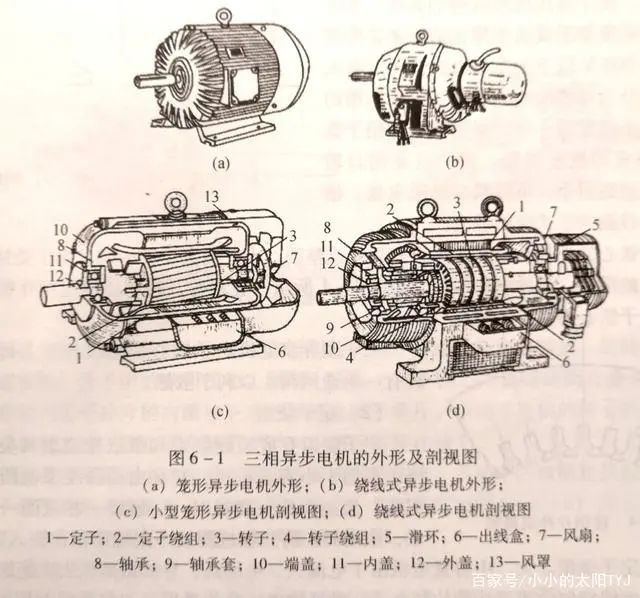
From the outside of the motor, you can see the fan cover, fan, left and right end covers, nameplates, and junction boxes . Open the junction box, you can see the binding posts and pinout . Remove the fan cover, fan, and end cover, pull out the rotor, and you can see the stator core, rotor core, shaft, bearing and other components inside the motor . The stator core is loaded into the frame, and the rotor core is mounted on the shaft. There are coils (windings) on the stator core, and cage-shaped aluminum bars are cast in the rotor core . The wound rotor core has rotor windings .
It can be seen that the basic structure of the motor is composed of a stationary part of the stator, a rotating part of the rotor and other components, as shown in Figure 6-2.
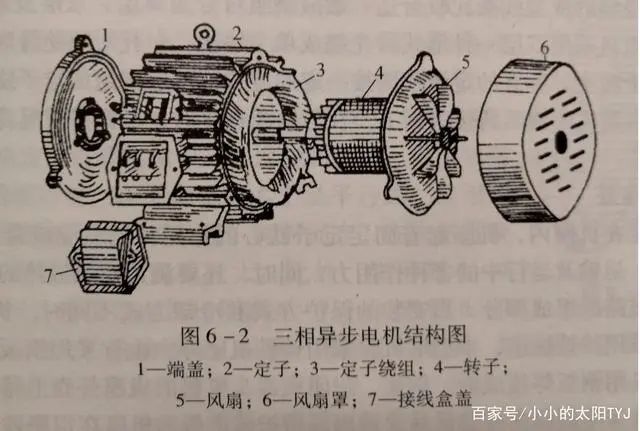
The rare earth permanent magnet motor is a new type of permanent magnet motor that appeared in the early 1970s. The rare earth permanent magnet material has excellent magnetic properties. After magnetization, it can establish a strong permanent magnetic field without external energy, which is used to replace traditional motors. The rare-earth permanent magnet motor made of the electric excitation field is not only high in efficiency, but also has a simple structure and reliable operation, and can also be small in size and light in weight. It can not only achieve high performance (such as ultra-high efficiency, ultra-high speed, ultra-high response speed) unmatched by traditional electric excitation motors, but also can be made into special motors that can meet specific operating requirements.
High-performance rare earth permanent magnet motors are the foundation of many new technologies and high-tech industries. It is combined with power electronics technology and microelectronic control technology to manufacture various mechatronics products with excellent performance, such as CNC machine tools, machining centers, flexible production lines, robots, electric vehicles, high-performance household appliances, computers and so on.
With the development of permanent magnet synchronous motors, high-efficiency permanent magnet synchronous motors such as high temperature, high vacuum, electric vehicles, built-in inverters, low-speed high-torque and self-starting have gradually entered some specific application fields. Due to the specific performance requirements of the motor in different working conditions, the overall development direction of the permanent magnet motor has gradually shown some specific characteristics.
Under the premise of a certain volume, to increase the rated power of the motor, it is necessary to greatly increase the speed of the motor. Rare earth permanent magnet motors do not require excitation windings, the structure is relatively simple, there is no heat source in the magnetic field, and no cooling device is required.
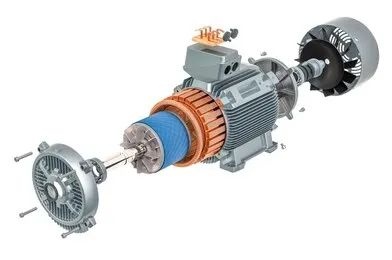
High-performance development
Modern equipment puts forward various high-performance requirements to the motor industry, such as military equipment required to provide various high-performance signal motors, mobile power stations, servo systems and motors for automation equipment, and high-performance, high-reliability permanent magnets for aerospace applications. Motors, high-precision variable-frequency speed-regulating synchronous motors for chemical fiber equipment, high-speed-regulating rare-earth permanent magnet servo motors for CNC machine tools, machining centers, and robots, high-precision swing motors and spindle motors for computers, etc. Develop in the direction of special motors.
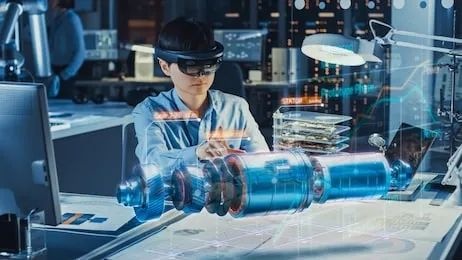
Lightweight development
Aerospace products, electric vehicles, CNC machine tools, computers, audio-visual products, medical equipment, portable opto-mechatronics products, etc., all impose strict requirements on motors with small size and light weight. Permanent magnet synchronous motor has been developed and applied in elevator technology because of its advantages of small size, energy saving, good control performance, easy to make low-speed direct drive, eliminating gear reduction device, and speed regulation through frequency changes.
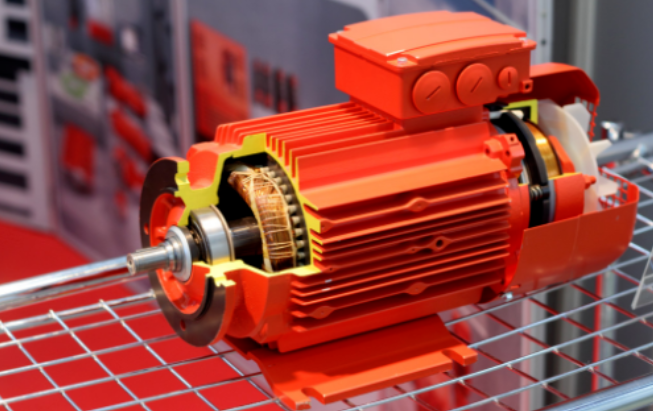
Switched Reluctance Drive (SRD) is the latest generation of stepless speed regulation system developed after variable frequency speed regulation system and brushless DC motor speed regulation system. , infrared photoelectric technology and modern electromagnetic theory, design and production technology as one of the integration of light, machinery and electricity high-tech. It has the advantage that the speed control system has both DC and AC speed control systems. Developed countries such as the United Kingdom and the United States have started research on the speed control system of switched reluctance motors earlier, and have achieved remarkable results. machinery and electric vehicles. The salient poles of the stator and rotor of the switched reluctance motor are laminated by ordinary silicon steel sheets. This processing technology can reduce the eddy current and hysteresis losses of the motor as much as possible. There are neither windings nor permanent magnets on the rotor poles, nor commutators, slip rings, etc., and concentrated windings are wound around the stator poles. Two diametrically opposite windings are connected in series to form a phase, and the overall structure of the motor is simple.
Switched reluctance motor is a motor that uses the uneven rotor reluctance to generate torque, also known as reactive synchronous motor. Its structure and working principle are very different from traditional AC and DC motors. It does not rely on the interaction of the magnetic fields generated by the stator and rotor winding currents to generate torque, but relies on the "minimum reluctance principle" to generate torque, that is: "the magnetic flux is always closed along the path with the minimum reluctance, resulting in Magnetic pulling force, which in turn forms the electromagnetic torque of magnetoresistive properties" and "magnetic field lines have the nature of trying to shorten the magnetic flux path in order to reduce the magnetic resistance and increase the magnetic permeability".
The reluctance type synchronous motor is evolved from the same cage type asynchronous motor. The rotor is provided with a cage type cast aluminum winding , but there is a reaction slot corresponding to the number of stator poles (only the role of the salient pole part, no field winding and permanent magnet) to generate reluctance synchronous torque. Reluctance synchronous motors are divided into single-phase capacitor running type, single-phase capacitor starting type, single-phase dual-value capacitor type and other types. Application areas: Reluctance synchronous motors are mainly used in industrial and agricultural production, transportation, national defense, commercial and household appliances, medical electrical equipment and other fields.
Advantages: high reliability, low cost, high technology maturity, high market share.
Disadvantages: ordinary motors have low efficiency, low technical threshold, fierce competition, and insufficient technological innovation.
Opportunity: In places with high requirements for reliability of working conditions, ordinary working conditions can be satisfied. The promotion of high-efficiency motors is the focus of energy-saving work.
Threat: The rare earth permanent magnet market is expanding, especially in the high-efficiency motor market.
Advantages: not only high efficiency, but also simple structure, reliable operation, small size and light weight.
Disadvantages: The cost is 30% higher than that of asynchronous motors, and demagnetization will occur at high temperatures for a long time.
Opportunities: fields such as oil field, textile chemical fiber industry, ceramic glass industry and fans and pumps with long operating hours. Market share gradually expanded.
Threat: It cannot be used in places with excessive power, mainly because the cost is too high and the production process is difficult.
Advantages: The motor has a simple structure, low cost, and can be used for high-speed operation. The power circuit is simple and reliable, the starting torque is large, and the starting current is low.
Disadvantages: high noise and significant torque pulsation when running at low speed. It needs to be used with a controller, and the cost of the two together is high. At present, the power that can be achieved is 8kw-400kw, which is only suitable for special fields. In the general field, its advantages are not obvious compared to AC asynchronous and DC variable frequency speed regulation systems.
Opportunities: Electric vehicles, textile industry, coke industry, home appliance industry, suitable for fields that can exert their advantages, that is, fields that require high starting torque, high speed requirements, humid and hot environment and frequent reverse rotation.
Threats: Noisy problems are difficult to overcome and development is limited.
Advantages: Compared with the permanent magnet synchronous motor, the cost of the motor is greatly reduced under the same power conditions, and the use range of the motor is broadened, and the reliability of the motor operation is improved. Due to the simple structure, there is no electromagnetic loss in the rotor, which can avoid the disadvantages of the switched reluctance motor such as high noise and significant torque pulsation during low-speed operation.
Disadvantages: low power factor and small output compared with asynchronous motors of the same size.
Opportunities: Industrial and agricultural production, transportation, national defense, commercial and household appliances, medical electrical equipment and other fields.
Threat: In research stage. The current research is all about fractional horsepower motors, which have little place in AC systems.
|
project |
Small and medium three-phase asynchronous motors |
Rare Earth Permanent Magnet Motor |
Switched Reluctance Motor |
Synchronous Reluctance Motor |
|
cost |
Low |
middle |
high |
middle |
|
reliability |
high |
lower |
lower |
lower |
|
technology maturity |
very mature |
more mature |
generally |
immature |
|
market share |
great |
less |
less |
none |
|
efficiency |
generally |
high |
generally |
generally |
|
Copper density |
high |
lower |
lower |
lower |
|
Simple structure |
Difference |
it is good |
generally |
it is good |
|
size and quality |
big, heavy |
small, light |
small, light |
small, light |
|
noise |
Low |
Low |
high |
Low |
Comparative analysis of various competitive products from multiple levels. At present, small and medium-sized three-phase asynchronous motors are still the products with the most mature technology and the largest market share. However, in the future, we will further optimize the process and improve the technical level. In order to maintain a higher competitiveness, there is a further improvement in the type and other aspects.



























 XINDA
XINDA